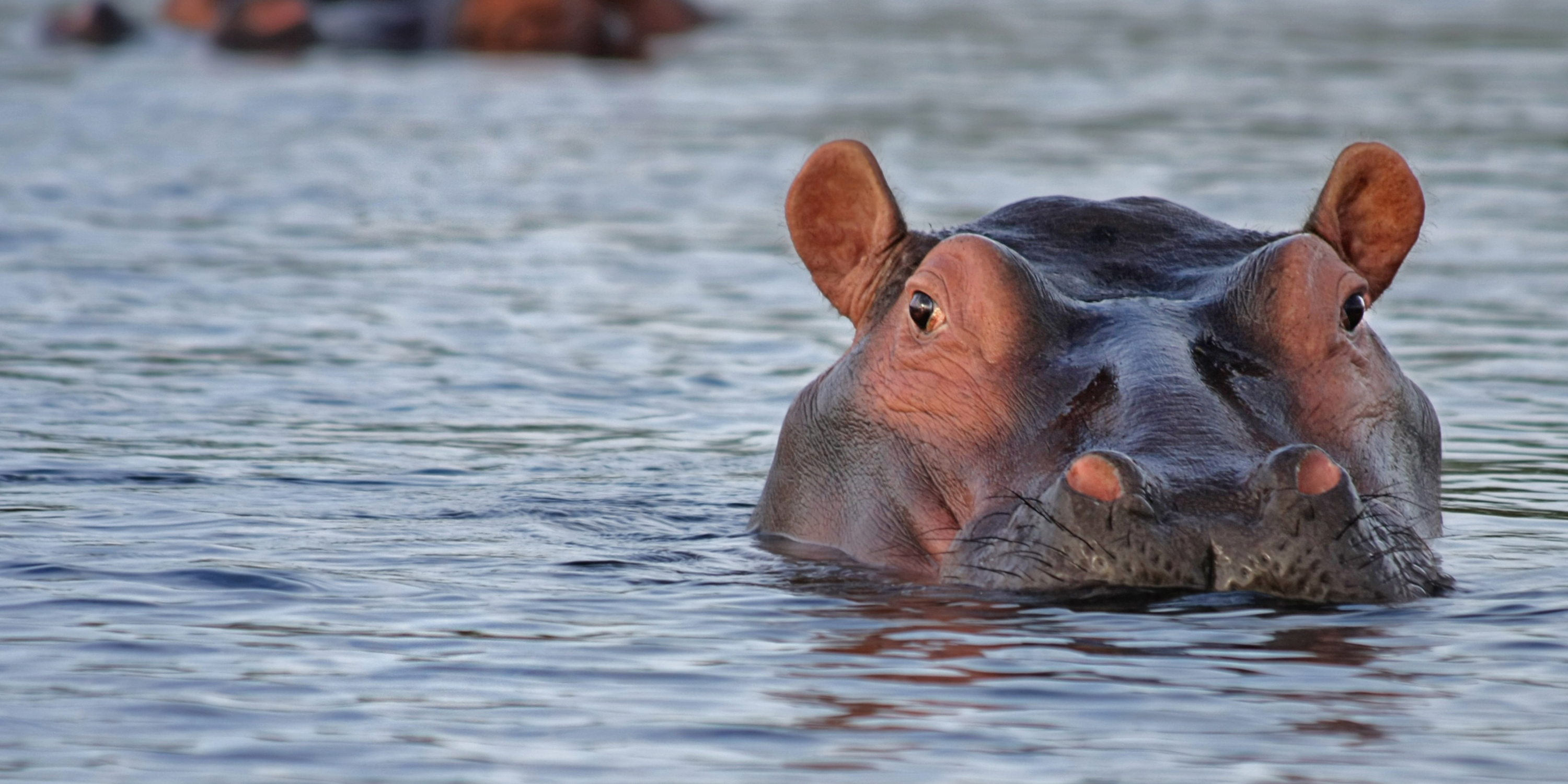Tanzania in East Africa has unique fauna and scenery. Safaris to see Tanzania’s wildlife are the top draw. Tanzanian safaris let travelers meet with Africa’s most famous animals.
Ngorongoro Crater, Tarangire National Park, and the Serengeti are popular Tanzania safari destinations. These locations have hippos, zebras, giraffes, elephants, and lions. Tanzanian safaris let you observe these animals in their natural habitat.
The Environmental Importance of Hippos in Tanzania
The Tanzanian ecology depends on hippos. The environmental impact of keystone species is disproportionate to their number. Hippos eat lots of grass daily. Grazing creates channels through the flora, keeping open spaces and preventing shrub and tree growth.
Hippos are ecosystem engineers because they change their environment. They spend most of their time in rivers and lakes, forming channels and wallows with their strong jaws and teeth. Frogs, birds, and fish inhabit these mounds.
Tanzanian hippo conservation is essential for environmental balance. Grazing pressure would decrease without hippos, changing plant composition and structure. The diet may affect hippos and other herbivores. If hippo wallows disappeared, nesting and feeding species would suffer.
Habitat and Distribution of Tanzanian Hippos
Hippos live among rivers, lakes, and marshes in Tanzania. They inhabit the Serengeti, including the Grumeti Game Reserve and the National Park. Katavi, Ruaha, and Selous Game Reserve are other great hippo spots.
 Hippos enjoy deep-water swimming and plunging. Semi-aquatic animals spend a lot of time in the water to stay cool and protect their fragile skin. They cut their own paths through the foliage to reach rivers and lakes, therefore they are usually near them.
Hippos enjoy deep-water swimming and plunging. Semi-aquatic animals spend a lot of time in the water to stay cool and protect their fragile skin. They cut their own paths through the foliage to reach rivers and lakes, therefore they are usually near them.
Hippos’ Anatomy
Hippos have barrel-shaped bodies, huge heads, and short legs. Men of this largest land mammal can weigh 3,500 kg (7,700 pounds), whereas women can only weigh 1,500 kg. Hippos swim 8 km/h despite their size.
Hippos’ sharp incisors and 51-centimeter (20-inch) canines are notable. These teeth defend against predators. Hippos destroy plants with back molars.
Mammals and female hippos have different tusks. Hippos—bulls—are bigger than cows. Bulls have longer, more noticeable tusks up to 51 cm (20 inches). The tusks are employed for social dominance and warfare.
Hippos’ Social Structure and Behavior
Social hippos live in pods or bloats. A pod typically has numerous females, their progeny, and the dominant male. Females and pod territory are protected by dominant males. His violent outbursts intimidate competing men and demonstrate his power.
A pod has a social hierarchy. Top men can mate exclusively with females. Women become closer and live more equally. Younger boys rarely challenge dominating men until they mature sexually.
Hippos are aggressive while guarding their young or territory. These deadly African beasts hunt on automobiles and boats entering their domain. Visitors to Tanzania’s safari parks must avoid hippos.
Hippos’ diet
Most hippos eat grass. They may consume 40 kg (88 lb) of grass daily. Hippos need regular feedings to get enough energy due to their small stomachs.
Hippos feed on land at night. Due to their unique teeth, they can bite off enormous grass mouthfuls and ground it down with their molars. Hippos relax by the water during the day. They can be in the water for 16 hours a day to maintain body temperature and protect their sensitive skin from the sun.
Hippos’ Reproduction and Life Cycle
Hippos reproduce differently. Girls reach sexual maturity at five to six, and guys at seven to eight. Hippos reproduce during the rainy season when food and water are abundant.
The dominant male aggressively attracts females and establishes authority during mating. Eight months of gestation will produce one calf for a chosen female. A swimming calf emerges from the water in seconds.
The calf will only eat her milk for 8 months. The calf will then wean off its mother’s milk and consume grass. Hippos are aggressive mothers who protect their young.
Threats to Tanzanian Hippos
Large and powerful Tanzanian hippos confront many threats. Human-caused habitat loss is a major risk. Population growth requires more space for infrastructure, communities, and agriculture. These often destroy hippos’ habitats and split their populations.
Poaching impacts hippos. Elephants are hunted for meat, hides, and ivory. CITES regulates hippo trade, while local markets promote illegal trade.
Hippos also suffer from human-nature conflicts. Human-hippos conflicts increase as human settlements invade hippos’ habitats. Hippos zealously defend their territory. Hippos may kill people for attacking their animals, crops, or properties.
Conservation of Tanzanian Hippos
Tanzanian hippos are protected to ensure their survival. National parks and wildlife reserves protect hippos from poaching and habitat loss. These zones safeguard hippopotamuses and other species.
Hippos need local protection too. Local communities learn about hippos and their environments from these initiatives. They reduce pressure on hippo habitats by providing alternative livelihoods for natural resource-dependent populations.
Poaching and hippos are being cracked down on by law enforcement. This requires increasing intelligence collection, patrols in protected areas, and animal traffickers’ prosecution. Police are making it clear that hippos will not be poached or traded illegally.
Top Tanzanian Hippos Areas
Tanzania safaris offer several great spots to see hippos in their natural habitat. Hippos are great to see in the Serengeti National Park’s Grumeti and Mara rivers. These waterways have huge hippos swimming or sunbathing.
Ngorongoro Crater is another hippos’ hangout. Hippos and other animals live in the UNESCO World Heritage Site crater. Visitors can see hippos with buffalo and elephants in nature.
 Hippos abound in Tarangire National Park. The northern Tanzanian park’s elephant and baobab populations are famous. Tarangire River boat safaris show hippos swimming and playing.
Hippos abound in Tarangire National Park. The northern Tanzanian park’s elephant and baobab populations are famous. Tarangire River boat safaris show hippos swimming and playing.
Your Tanzania Safari Must Include Hippos
Hippos are fascinating and vital to Tanzania’s ecology. By grazing, they keep open spaces and prevent tree and shrub growth. Their wallows increase biodiversity by supporting other species.
On your Tanzania safari, see hippos in their natural habitat. Watching these majestic animals swim, play, or relax in the sun is amazing.
Hippos are wild animals and should be respected from afar. They’re dangerous to approach due to their aggression. By watching these beautiful creatures from afar and following knowledgeable guides, your Tanzania safari may be safe and exciting.

